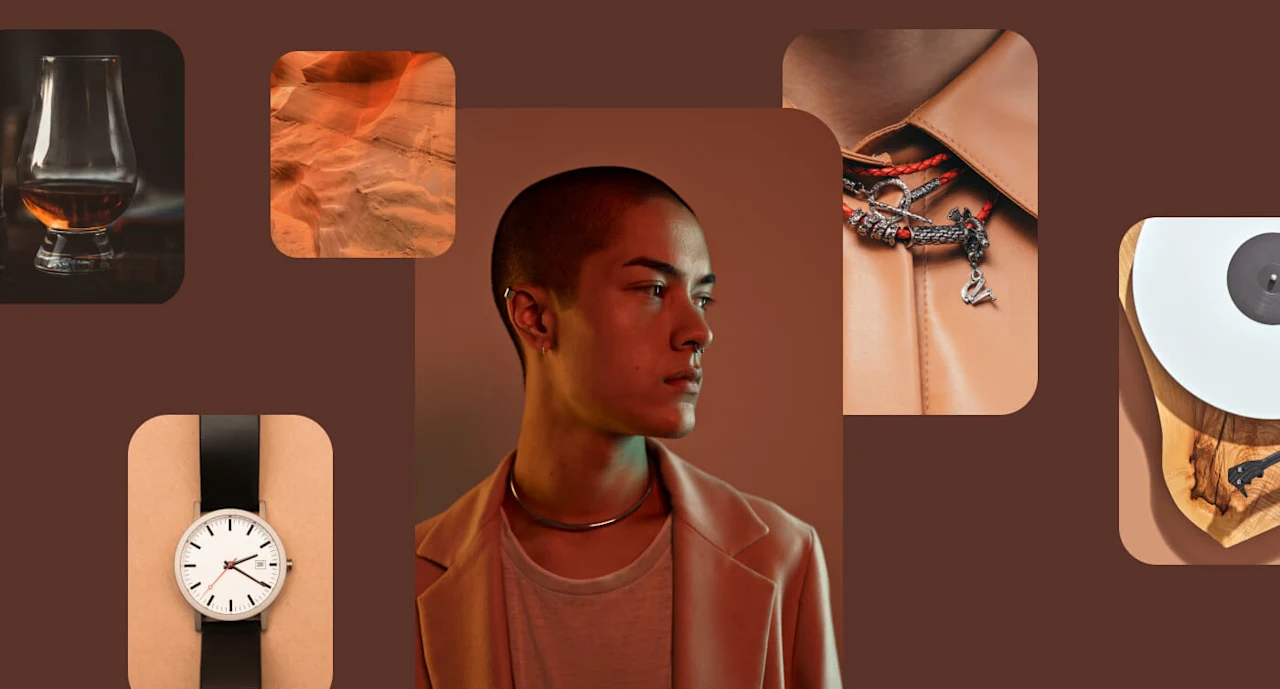The rise of the luxury shopper on Pinterest—and how brands can lean in
20 March 2024 — Kelly Emmanuelli

The luxury market is poised for significant growth. Pinterest is brimming with shoppers eager to discover high-end products—and primed to purchase them.
The outlook for the luxury industry in 2024 is bright, with global revenue for luxury goods anticipated to reach US$368.90 billion, marking an annual growth rate of 3.22%.1 And looking ahead to 2030, Millennials and Gen Z are projected to account for up to 85% of luxury purchases, hinting towards a promising future for luxury brands.2
This upward trend presents great opportunities for marketers, though it also places them in a pivotal position. They’re navigating the rapidly evolving digital landscape, which in turn demands innovative strategies to engage audiences and stand out amid intense competition. However, the good news is: Based on PA Consulting research commissioned by Pinterest, the platform is a desired destination for luxury shoppers among monthly Pinterest users (weekly in the US).3 And considering that Gen Z is Pinterest’s fastest-growing and most engaged audience, the outlook is looking pretty bright here too.4
The rise of the luxury shopper on Pinterest
With over 518 million monthly active users worldwide, people are actively shopping on Pinterest.4 Among those millions, the luxury audience on Pinterest is expanding rapidly, up 31% YoY and growing three times faster than the platform's overall user base.5
In fact, according to PA Consulting, Pinterest has shown to be the number one destination for luxury inspiration—monthly Pinterest luxury shoppers in the UK, France and Italy (and weekly in the US) are over half as likely to say they research luxury brands and products on Pinterest than other sites or apps.6
This is because shopping is built as part of the user experience (UX). We’re not trying to be a retailer—we want to get your products in front of high-value customers.
And your shopping ads fit right in. They enhance the UX. No matter where people are on their shopping journeys, your ads offer a helping hand for shoppers browsing for inspiration or narrowing down their options—they’re intent on finding what they’re looking for. As a result, the entire customer journey happens on Pinterest, from discovery to decision to do.
Pinterest offers something unique for every aesthetic. People use it to inform their tastes, styles and futures and become the best version of themselves—and that’s why they’re using it to immerse themselves in all things luxury. Here’s what the luxury shopper looks like on Pinterest:
They’re affluent: A third of monthly luxury shoppers on Pinterest (weekly in the US) have annual incomes exceeding USD $100,000 and are 35% more likely to crack the six-figure mark than luxury shoppers on other platforms.3
They’re young: Gen Z make up nearly half of Pinterest’s luxury audience—that's up 47% YoY.5
They’re spending: People on Pinterest use the platform to inspire their personal style and help inform their buying decisions. Over half (53%) of monthly Pinterest luxury shoppers in the UK, France and Italy (weekly in the US) say they buy luxury brands and products here.6

Why Pinterest is the place where people love to shop luxury
Luxury shoppers use Pinterest to immerse themselves in a brand's universe. This can be everything from understanding a brand's distinctive style to aesthetics, history, collections, product lineups and offerings.
People seek inspiration on how to style certain products and get the latest intel on rising trends. While ads play a key role in the UX, Pinterest ad product features such as direct links can take shoppers from discovery to action with a single click. Notably, more than 2 in 5 monthly Pinterest users (weekly in the US) have purchased luxury watches and jewellery after encountering them on Pinterest, with 85% of these consumers also investing in luxury beauty products.3
Furthermore, monthly Pinterest luxury shoppers in the UK, France and Italy (weekly in the US) also come here to discover gift ideas for their loved ones, particularly during the festive season. But they're not just browsing for others; they're actively creating wishlists for themselves too. For instance, during the 2023 festive season, we saw an almost 90% increase YoY in saves of luxury-related Pins.7
While Pinterest searches are often broad and unbranded, an interesting trend emerges within the luxury sector. Among the top 10 most frequent search terms, eight include the brand name only—with “Dior”, “Chanel”, “Louis Vuitton”, “Gucci”, “Prada”, “Balenciaga”, “Versace” and “Ralph Lauren” amongst shoppers’ favourites.8
Take note from the luxury brands already driving success
Many luxury brands have already seen full-funnel success on Pinterest. When used effectively, Pinterest proves a powerful tool at every stage of the consumer journey, whether helping to build brand awareness or drive sales. Take inspiration from these noteworthy campaigns:
A Louis Vuitton campaign achieved record results by including a video specially designed to challenge the frame of the Pin and implementing Premiere Spotlight. The results? They reached over 3.5 million users in just three days.9
Guerlain reached their core audience of high-end female shoppers aged 25-49. How? By combining a range of Pin formats to catch shoppers' attention, which in turn increased brand awareness by 16% and drove a +40% lift in add-to-cart conversions.10
YSL celebrated full-funnel success when they reached Pinterest shoppers at every step of the purchase journey. They engaged 84% of their target audience11 and drove a +23% lift in incremental sales across their e-commerce site—proving particularly successful amongst the 25-34 age group.12
By tapping into Pinterest's unique capabilities, luxury brands can elevate their online presence, engage with an affluent audience and drive meaningful growth. The future of luxury brand marketing is here, where inspiration meets aspiration, engagement leads to conversion—and shoppers are eagerly waiting for brands like yours.

